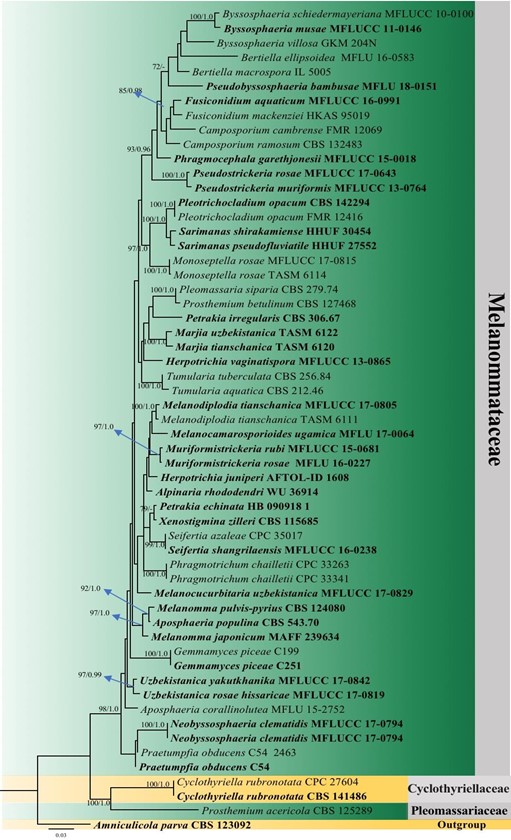Petrakia Syd. & P. Syd., in Sydow & Sydow, Annls mycol. 11(5): 406 (1913).
MycoBank number: MB 9277; Index Fungorum number: IF 9277; Facesoffungi number: FoF 01820; 6 morphological species (Species Fungorum 2020), 4 species with molecular data.
Type species – Petrakia echinata (Peglion) Syd. & P. Syd., Annls mycol. 11(5): 406 (1913).
≡ Epicoccum echinatum Peglion, Malpighia 8: 459 (1895).
Notes – Petrakia is characterized by sporodochial conidiomata and muriform, brown conidia with cellular, hyaline appendages (Sydow & Sydow 1913b, Butin et al. 2013, Jaklitsch & Voglmayr 2017). Petrakia has mycopappus-like propagules as an asexual morph in its life cycles, and sexual morph of P. echinata was reported by Butin et al. (2013). Based on phylogenetic studies, Phookamsak et al. (2014c), Tian et al. (2015) and Jaklitsch & Voglmayr (2017) included Petrakia in Melanommataceae. Hashimoto et al. (2017a) proposed Pseudodidymellaceae to accommodate four genera Mycodidymella, Petrakia, Pseudodidymella, and Xenostigmina based on the characters of epiphyllous, lenticular ascomata in sexual morphs and mycopappus-like propagules in their asexual morphs. In this study, the type species P. echinata clusters with Xenostigmina zilleri (CBS 115685) with 79 % MLBS, and formed a sister group with Seifertia within Melanommataceae (Fig. 109). We retain Petrakia in Melanommataceae.

Figure 109 – Phylogram generated from maximum likelihood analysis (RAxML) of genera in Melanommataceae based on ITS, LSU, and SSU sequence data. Maximum likelihood bootstrap values equal or above 70 %, Bayesian posterior probabilities equal or above 0.90 (MLBS/PP) are given at the nodes. An original isolate number is noted after the species name. The tree is rooted to Amniculicola parva (CBS 123092). The ex-type strains are indicated in bold. Hyphen (-) represents support values below 70 % MLBS and 0.90 PP.
Species
